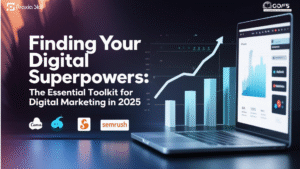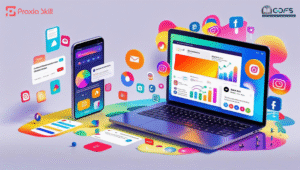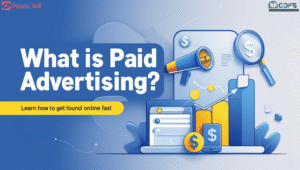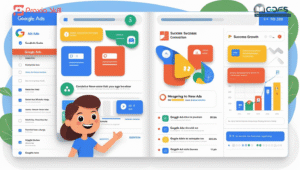Why Digital Marketing is a Game-Changer
Think about your day: you wake up, check your phone, scroll through Instagram, maybe Google a recipe, and watch a quick YouTube video. Sound familiar?
That’s the online world—and it’s the main stage for digital marketing. It’s where businesses and customers connect in a way that feels natural, not forced.
If your business isn’t online, you’re practically invisible to a huge chunk of your potential customers. Digital marketing is all about putting your business in front of the right people, at the right time, without you having to be everywhere at once.
Whether you’re running a home bakery, a local clothing shop, or just starting a side hustle, understanding these different strategies can help you:
- Get noticed by more people
- Increase sales without being pushy
- Stay ahead of the competition
Let’s break down the different types of digital marketing—no jargon, no tech headaches.
The Different Types of Digital Marketing
1. Search Engine Optimization (SEO)
Making your website easy for Google to find and recommend.
Think of it like: Planting seeds in a garden. You plant them with good content, and over time, they grow into a steady stream of traffic.
When people search for something, Google shows them the most relevant websites. If your site is well-optimized with the right keywords, fast loading times, and helpful content, you have a much better chance of showing up. For example, if you own a bakery in Mumbai and your website mentions “Best Cakes in Mumbai” in all the right places, people searching for cakes will find you faster.
2. Social Media Marketing (SMM)
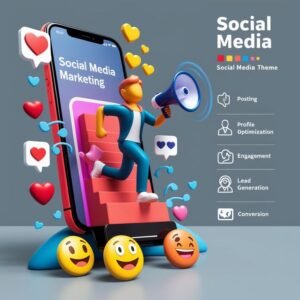
Using platforms like Instagram, Facebook, or LinkedIn to promote your brand.
Think of it like: Hosting a daily party where your customers hang out. You just have to keep the music (your content) fresh so they keep coming back.
You post photos, videos, and stories to connect with your audience and build a community. You can also run ads to reach more people. A great example is a fashion store posting Instagram Reels of new outfits, tagging products so customers can buy directly from the video.
3. Email Marketing
Sending helpful or promotional emails to people who’ve signed up to hear from you.
Think of it like: Sending personalized letters straight to your customers’ homes—their inbox.
You collect emails through a sign-up form or a purchase, then send newsletters, discounts, or updates directly to their inbox. An online bookstore sending “Weekly Book Picks” with reviews and discounts is a perfect example of this.
4. Pay-Per-Click (PPC) Advertising
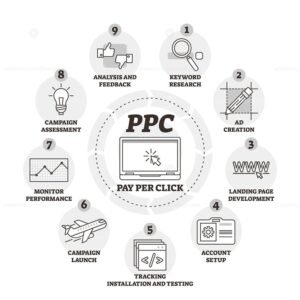
Paying for ads where you’re charged only when someone clicks on them.
Think of it like: Renting a billboard on the busiest street. The moment you stop paying, the billboard disappears.
Platforms like Google Ads or Facebook Ads show your ad to targeted users. You only pay when they click it, making it a great way to get quick attention. A travel agency running a Google Ad for “Cheap Holiday Packages” that appears when someone searches for vacations is a classic example of PPC.
5. Content Marketing
Sharing useful information to attract people to your brand.
Think of it like: Giving free samples at a store. People try your value first, then decide to buy more.
You give away valuable content like blog posts, videos, or tips that solve problems or answer questions. This builds trust with your audience, making them more likely to buy from you later. A fitness trainer posting free workout videos and healthy recipes on YouTube is a great way to attract potential clients through content marketing.
6. Influencer Marketing
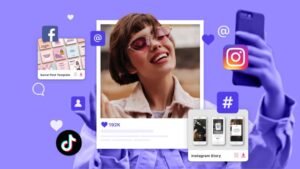
Partnering with popular social media personalities to promote your brand.
Think of it like: Getting the “cool kid” in school to wear your brand—suddenly everyone wants it.
You collaborate with influencers who already have your audience’s attention and trust. For instance, a skincare brand working with a beauty YouTuber to review their products can get their brand in front of thousands of potential customers quickly.
7. Affiliate Marketing
Paying someone a commission for selling your products through their promotion.
Think of it like: Having a sales team that only gets paid when they bring in customers.
Affiliates promote your products using special links. When someone buys through their link, they earn a commission. A blogger recommending your electronics store and earning a cut from each sale is a common form of affiliate marketing.
Conclusion: The Power of Mixing It Up
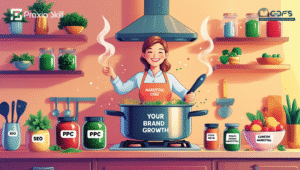
Think of digital marketing not as a single strategy, but as a great recipe. You wouldn’t use just one ingredient to make a fantastic dish, would you? The same goes for your online presence. You need to mix the right flavours to create something truly special.
Start with a pinch of SEO to bring in a steady stream of visitors, a dash of PPC for a quick boost, and a generous scoop of social media to keep your community engaged.
If you’re just starting, don’t feel like you need to use every ingredient at once. Pick one or two things you can manage, see what works, and adjust as you go. The more your audience sees you and connects with your content, the more chances you have to win them over. In the end, showing up consistently is the secret ingredient that makes everything better.
